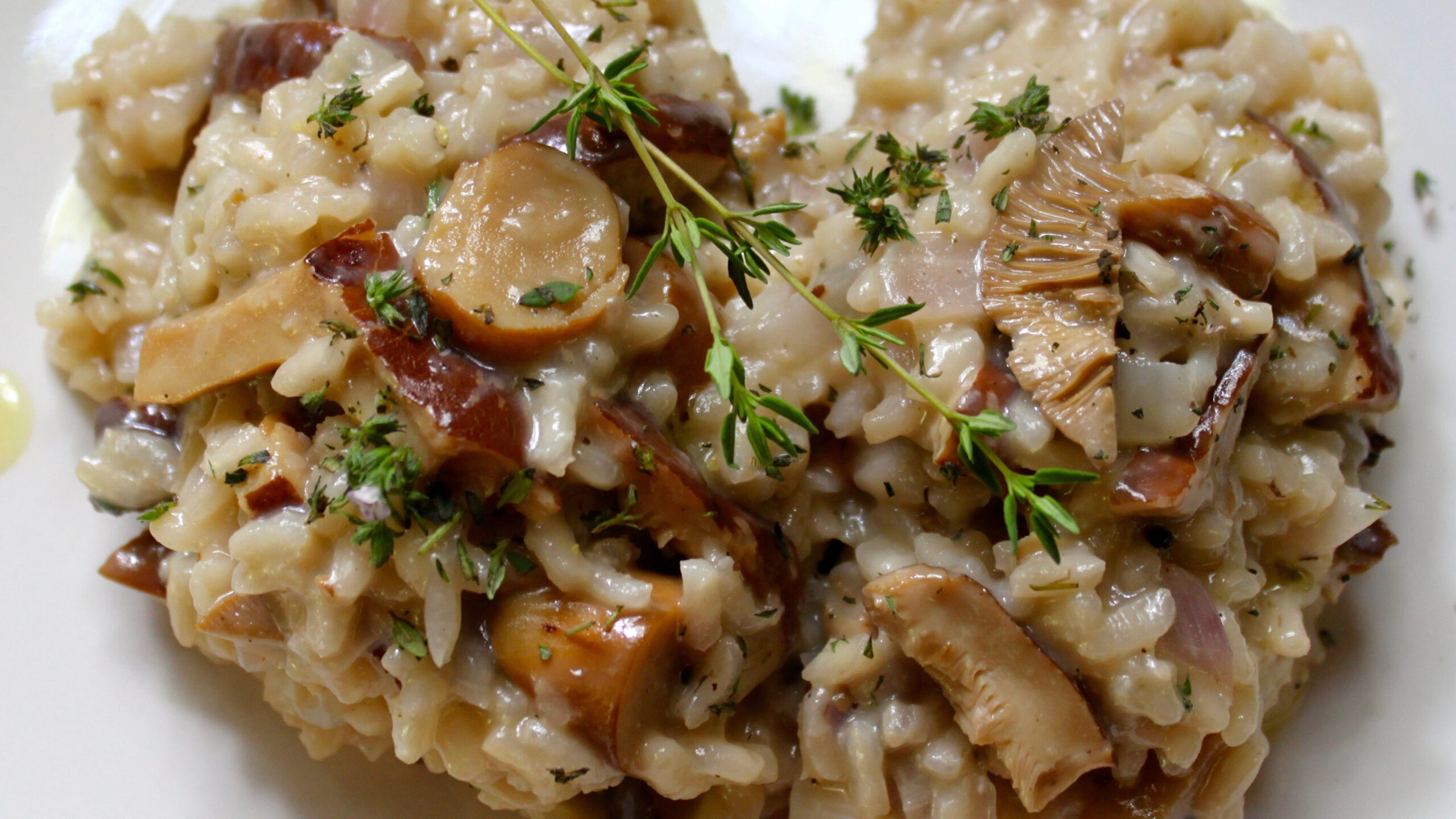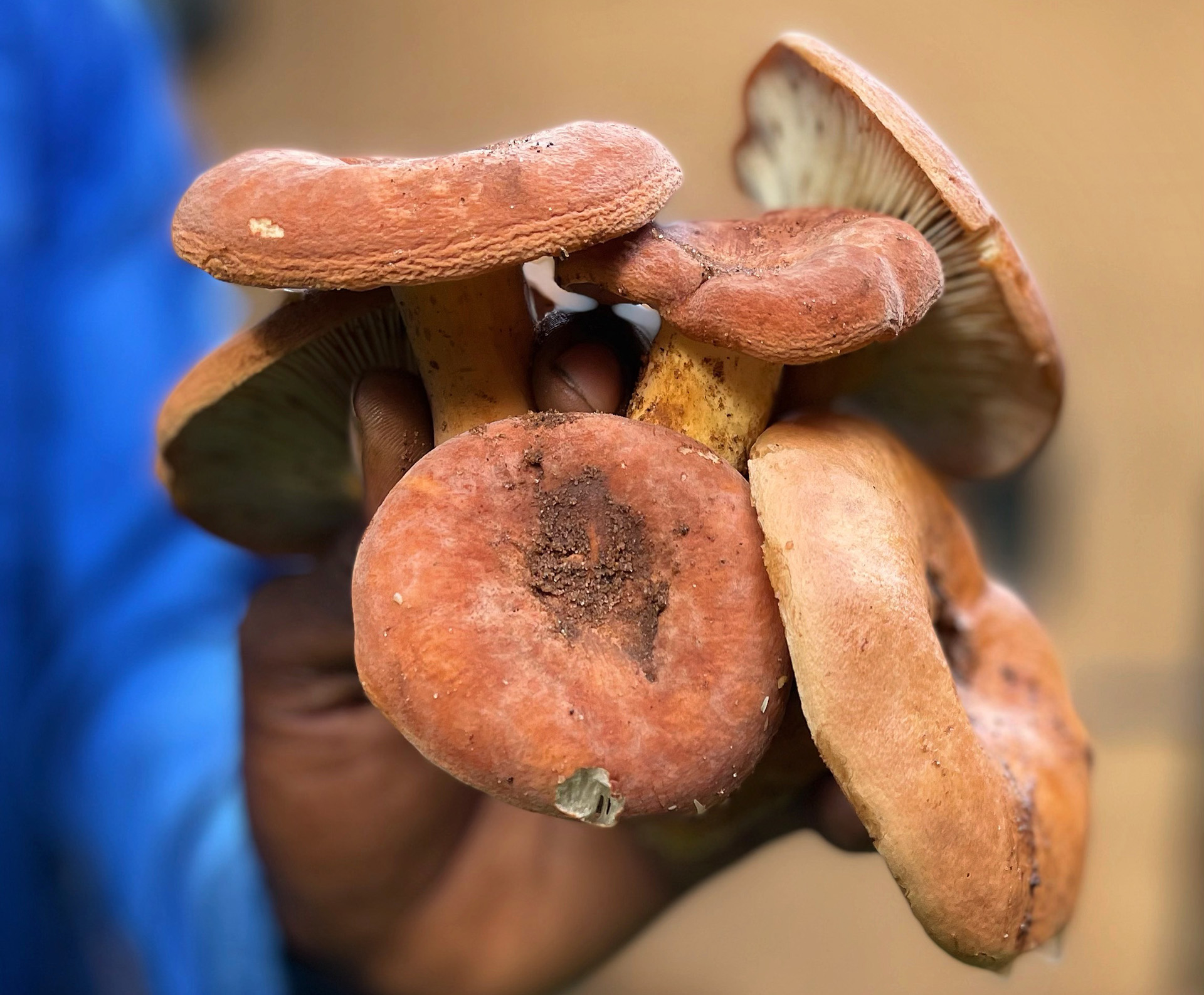The first time I turned to the ‘Kenya Settlers’ Cookery Book and Household Guide’ with any serious intent was when I decided to make a risotto featuring wild mushrooms. A book handed down to me by my mother, who had bought it after marrying my father in Kenya in 1959, it was East Africa’s equivalent to America’s ‘The Joy of Cooking’ crossed with Britain’s Mrs. Beeton’s ‘Everyday Cookery’. The 334-page book, with its damaged spine and navy leather cover, first published in 1928 but in its 12th edition, was filled with useful advice for young women starting out married life in what-was-then one of Britain’s most coveted colonies.
I was neither young nor in Kenya when I reached into our shelves for the book. I was here, on a farm in Livingstone in southern Zambia, aged 48, having recently moved in with the man who is now my husband, desperate not to kill him off after fancying him for most of my adult life.
The Kenya Settlers’ Cookery Book, on page. 41, assured me that there was a Test for Mushrooms: “With mushrooms one cannot be too careful. Commence peeling the outside white skin of the mushroom, from the edge to the crest. If the skin does not come off easily the mushroom is suspect. To make sure, if not certain, put a shilling in the pan of frying mushrooms. It will turn black if they are of a poisonous variety.” This disquieting advice was casually followed by a recipe for Toasted Cheese.
It would take a brave (or benighted) woman, newly arrived in Africa, to venture out into the bush for wild mushrooms using only a shilling as a guarantee she wasn’t about to murder her husband. Even now, after years of wild mushroom seasons, I won’t forage on my own.
The first line of the book’s Preface resonated with me, however, when I read that “many difficulties were encountered by homemakers of East Africa during the early part of the century: ingenuity and improvisation were necessary when feeding a family and making a home.” Although we live in the 21st century, in a modern, independent Zambia, our tiny house was built in 2004 under the crown of a massive mongongo tree in only 20 days, originally costing the grand sum of $1,700. We have renovated since but back then there were no doors, few windows, and the original kitchen was open-air.
Even though we don’t have to rely on paraffin hurricane lamps and wood stoves here—we have a mostly-working electricity grid—one has to be creative living as we do. Be it finding a way to avoid serving a battalion of bugs attracted to the light above your chopping board, or trying to serve ice cream without it melting in the intense midday heat. Be it lightning strikes that blow the fuses in stoves and fridges in the rainy season, we are seldom defeated. We improvise. We simply do not have a choice.
The Kenya Settlers’ Cookery Book’s oven chart—it’s the 12th edition, remember, so by 1958 gas ovens were available—is followed by the Simple Test for Temperature for Other Types of Ovens:
1) Heat the oven.
2) Place a piece of white kitchen paper in the oven for 3 minutes.
3) If the paper is:
- Black – the oven is too hot.
- Deep brown – the oven is very hot.
- Golden brown – the oven is hot.
- Light brown – the oven is moderately hot.
- Light biscuit – oven is slow.
Parsimony is an overarching theme in the book, encouraging all sorts of economy like saving old brushes, stale bread and silk stockings; like cleaning and curing your own poultry feathers for home use; like saving milk that’s turned sour (a perennial problem here in Livingstone in October). Sour milk is much to be preferred to fresh in mixing scones, pancakes, soda bread, soda cakes and steamed puddings. …
The Zambians with whom I work, particularly those who grew up in rural villages, have, over the years, taught me about the wild mushrooms they eat and those they avoid. A couple of days after a good downpour during the rainy season, they will disappear into the bush just beyond our house for an hour or so, and return with a bowlful of different colored wild mushrooms.
There are about four or five different varieties of edible native mushrooms growing in the surrounding woodland. From high-vis orange chanterelles called kapuipui to the rusty-topped chinyika mushrooms; from storybook tall white mushrooms to an oyster-like variety that are so delicate one feels almost afraid to pick them. In Choma, a farming district two hours north of us, you can find an edible variety the size of a bicycle wheel, and that is not an exaggeration.
We use chinyika mushrooms in our risotto because they are meatier and more robust than other native varieties. Not unlike a shiitake, they don’t disintegrate into the rice, although the jury is out on the strength of its flavor. I sometimes combine the chinyikas with button mushrooms, grown on a nearby small holding.
My kitchen team mostly learned as children which mushrooms should be eaten soon after picking, which ones last for days in a cool place, and which ones can be dried and stored. They learned how to easily remove the sand from the mushrooms’ gills, and they were taught many different ways to prepare them. My husband especially loves the traditional dishes the Zambians cook, but for me it is the season for risotto. Wild chinyika mushroom risotto! ![]()
The recipe: Wild Chinyika Risotto

